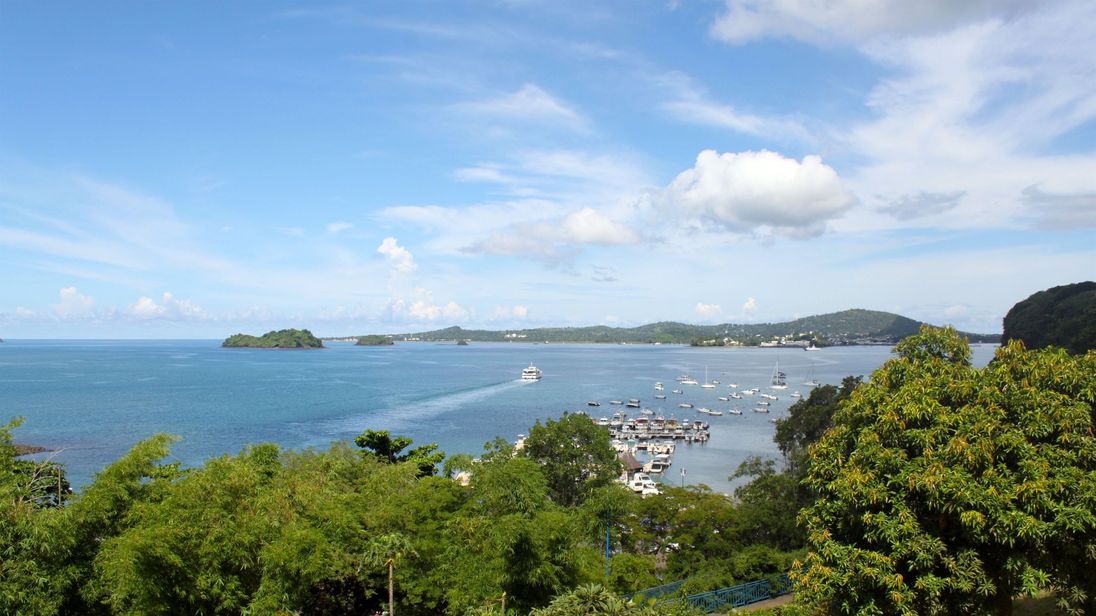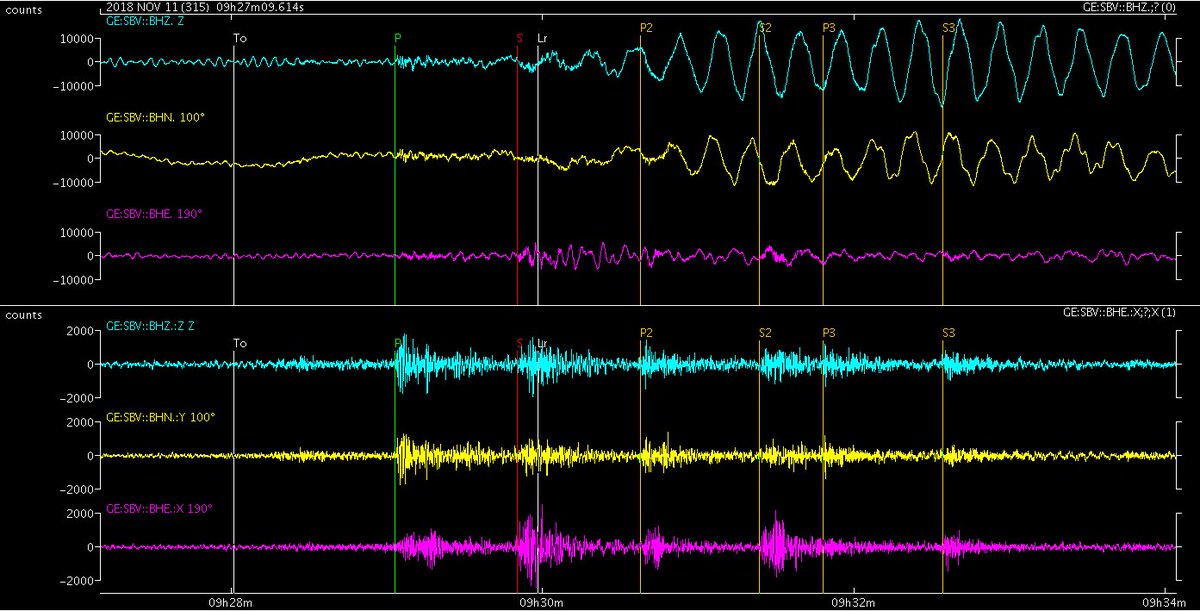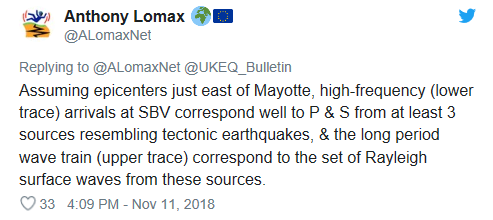nivek
As Above So Below
Scientists puzzled by mysterious earthquake that rumbled around the world

The seismic activity was tracked to near the Mayotte archipelago in the Indian Ocean
Scientists have been stumped by the 20-minute rumble of a mysterious seismic wave which was detected earlier this month.
The tremor occurred on the morning of 11 November near the archipelago of Mayotte, a collection of French islands in the Indian Ocean between Madagascar and Mozambique.
It is unclear whether it was caused by volcanic activity or a meteor strike, but it was felt by seismometers across the world, from New Zealand to Canada - and even in Hawaii.
Goran Ekstrom, a seismologist at Columbia University, told National Geographic: "I don't think I've seen anything like it."

Image: Mayotte lies between Madagascar and Mozambique. Pic: Google Maps
"It doesn't mean that, in the end, the cause of them is that exotic," Mr Ekstrom admitted, while acknowledging that the seismic waves were quite unusual.
Geologists shared their discovery of the surprisingly low frequency activity on Twitter, with Jamie Gurney, the founder of the UK Earthquake Bulletin, among the first to note the event.





Mr Gurney was soon joined by Anthony Lomax, who suggested the epicentres for the rumbles were just east of the Mayotte archipelago - but even with the location identified, the cause has remained a mystery.
A number of possibilities have been suggested, inspired by the fact that - despite the monitoring stations detecting seismic waves - there was no corresponding earthquake felt that morning.
The low frequency of the waves has been particularly interesting to seismologists.


Normally earthquakes result in powerful compressed waves known as Primary or P-waves. These are followed by Secondary or S-waves which are not so compressed and move from side to side.
Both of these types of waves have higher frequencies.
The low-frequency surface waves, similar to those detected from Mayotte, follow last. Because of their low frequency they are able to travel around the planet multiple times, ringing a bit like a bell.
But the mysterious low-frequency rumble on 11 November was not preceded by P-waves or S-waves, according to the seismologists.
The most prominent suggestion in the seismology community has related to what they've called a "seismic swarm" - essentially an event including many earthquakes rolling together.
But the earthquakes that have shaken Mayotte over the past 18 months have been very small, and getting smaller in recent months.
There was also no earthquake detected on 11 November when the mysterious rumble rang out.
Scientists are continuing their investigation.
.

The seismic activity was tracked to near the Mayotte archipelago in the Indian Ocean
Scientists have been stumped by the 20-minute rumble of a mysterious seismic wave which was detected earlier this month.
The tremor occurred on the morning of 11 November near the archipelago of Mayotte, a collection of French islands in the Indian Ocean between Madagascar and Mozambique.
It is unclear whether it was caused by volcanic activity or a meteor strike, but it was felt by seismometers across the world, from New Zealand to Canada - and even in Hawaii.
Goran Ekstrom, a seismologist at Columbia University, told National Geographic: "I don't think I've seen anything like it."

Image: Mayotte lies between Madagascar and Mozambique. Pic: Google Maps
"It doesn't mean that, in the end, the cause of them is that exotic," Mr Ekstrom admitted, while acknowledging that the seismic waves were quite unusual.
Geologists shared their discovery of the surprisingly low frequency activity on Twitter, with Jamie Gurney, the founder of the UK Earthquake Bulletin, among the first to note the event.





Mr Gurney was soon joined by Anthony Lomax, who suggested the epicentres for the rumbles were just east of the Mayotte archipelago - but even with the location identified, the cause has remained a mystery.
A number of possibilities have been suggested, inspired by the fact that - despite the monitoring stations detecting seismic waves - there was no corresponding earthquake felt that morning.
The low frequency of the waves has been particularly interesting to seismologists.


Normally earthquakes result in powerful compressed waves known as Primary or P-waves. These are followed by Secondary or S-waves which are not so compressed and move from side to side.
Both of these types of waves have higher frequencies.
The low-frequency surface waves, similar to those detected from Mayotte, follow last. Because of their low frequency they are able to travel around the planet multiple times, ringing a bit like a bell.
But the mysterious low-frequency rumble on 11 November was not preceded by P-waves or S-waves, according to the seismologists.
The most prominent suggestion in the seismology community has related to what they've called a "seismic swarm" - essentially an event including many earthquakes rolling together.
But the earthquakes that have shaken Mayotte over the past 18 months have been very small, and getting smaller in recent months.
There was also no earthquake detected on 11 November when the mysterious rumble rang out.
Scientists are continuing their investigation.
.
